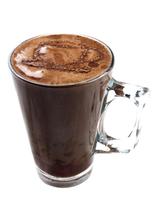Boutique coffee Brazil Bourbon Santos coffee flavor producing area
Xishan Dushi is a neutral bean. The aroma, acidity and mellow of the coffee are moderate, the bitter taste is low, and it is famous for its smooth taste. It is mild, slightly sour, smooth and round in the mouth, smooth but has a good return to sweet taste. Its neutral flavor, refreshing and harmonious flavor, is regarded as an indispensable role in the blending of coffee, but also very suitable for drinking as a single product, most suitable for people with aristocratic flavor, sense of humor and strong interpersonal relationships. In the eyes of many experts, the high-quality Brazilian Bourbon Santos is comparable to Blue Mountain Coffee, and its flavor is talked about by people. If Blue Mountain is the king of coffee, then Bourbon Santos Coffee in Brazil is a hermit in the coffee kingdom. People who love Santos coffee usually regard it as an implicit and meaningful friend.
Like all Brazilian coffees, they are best served when they are fresh and tender, because the older they are, the more acidic they are. Although Brazil is known as the "kingdom of coffee", the hometown of coffee is not in Brazil, but in the Ethiopian province of Cafa in Africa. The name "Coffee" evolved from the place name of "Kafa". Coffee was introduced into Brazil after the 18th century. In 1727, Brazil had a border dispute with its northern neighbor French Guiana. In order to prevent the situation from spreading, the Brazilian Governor sent a delegation of military officer Francisco de Moro Barreta to French Guiana for negotiations in an attempt to resolve the dispute between the two countries by peaceful means. Unexpectedly, his border negotiations failed, but unexpectedly became the "father of coffee" of Brazil.
French Guiana introduced coffee in 1722, first planted it in the backyard of the Government House, and then planted it on a small scale on a nearby farm. The Governor regarded coffee as a "national treasure" for fear of being taken away by neighboring countries, especially Brazil, which had absolute military and economic dominance at that time, so there were soldiers with guns patrolling around the coffee garden day and night.
After Moro Barretta arrived in Guyana, the coffee garden was heavily guarded and heavily guarded to keep Moro Barreta and his party from getting half a step closer. However, the handsome young officer won the favor of the governor's wife, not only invited Moro Barretta to taste coffee, but also personally accompanied him to visit the coffee garden, and presented a handful of ripe coffee beans and five coffee seedlings to Moro Barretta. After getting the seeds, Moro Barreta immediately left Guyana to escort the "national treasures" to Brazil. Since then, coffee has settled in Brazil. Those seeds are the ancestors of more than 3.9 billion Brazilian coffee trees today. In the early history of Brazil, coffee started very slowly. When Mr Molobaleta returned to Brazil, coffee culture began in the state of Para, at the mouth of the Amazon. About 1773, coffee was introduced from the north to Brazil's traditional agricultural areas on the southeast coast: Rio de Janeiro and Sao Paulo. As the climate here is very suitable for growing coffee, coupled with fertile land, cheap labor and other factors, coffee production in Brazil has developed rapidly. At the beginning of the 19th century, coffee was grown all over the country, followed by a "coffee boom" that lasted nearly a century.
When we lived in Brazil, we were invited to spend the weekend on a coffee plantation. The host accompanied us into the green coffee garden, and at a glance, the coffee trees were lined up horizontally and vertically, neatly, a bit like a Chinese tea garden, except that the coffee tree was taller than the tea tree and could grow to about 3 meters. the oval leaves are opposite, and the axils of the leaves are covered with cyan fruit. The master said that in May or June, the mature fruit will turn red, and it will be time to harvest coffee beans. Then we visited the coffee processing process, which requires superb expertise. Finally, the host warmly invited us to enter the coffee shop of the manor. A black woman brewed a cup of coffee for us with freshly ground hot beans in the traditional way, but she felt a strong aroma and fine taste. Its taste is not comparable to ordinary instant coffee. After drinking it, it still has a mouthful of fragrance. This is the most delicious coffee we have ever had.

Important Notice :
前街咖啡 FrontStreet Coffee has moved to new addredd:
FrontStreet Coffee Address: 315,Donghua East Road,GuangZhou
Tel:020 38364473
- Prev

Introduction to the types of boutique coffee producing areas of Papua New Guinea in Wiki Valley
Papua New Guinea has a detached and primitive natural environment and its land is vast and fertile. Its unique volcanic rock soil and abundant rainfall create excellent natural conditions for the growth of coffee. The top coffee beans in Papua New Guinea are as beautiful and precious as the country's national bird of paradise. Coffee is widely grown in the country at an altitude of 1300 to 1800 meters above sea level.
- Next

The best gold zone for growing coffee in China Pu'er City, Yunnan Province
The excellent quality of Simao coffee brand Simao coffee not only depends on the formation of unique geography and special climate, but also depends on variety, cultivation, harvest, processing, production and so on. Pu'er City focuses on variety selection and technical training in coffee cultivation. Liu Biao said. Since the development of coffee industrialization in Pu'er City began in 1988, Simao has been used since coffee was planted on a large scale.
Related
- Does Rose Summer choose Blue, Green or Red? Detailed explanation of Rose Summer Coffee plots and Classification in Panamanian Jade Manor
- What is the difference between the origin, producing area, processing plant, cooperative and manor of coffee beans?
- How fine does the espresso powder fit? how to grind the espresso?
- Sca coffee roasting degree color card coffee roasting degree 8 roasting color values what do you mean?
- The practice of lattes: how to make lattes at home
- Introduction to Indonesian Fine Coffee beans-- Java Coffee producing area of Indonesian Arabica Coffee
- How much will the flavor of light and medium roasted rose summer be expressed? What baking level is rose summer suitable for?
- Introduction to the characteristics of washing, sun-drying or wet-planing coffee commonly used in Mantenin, Indonesia
- Price characteristics of Arabica Coffee Bean Starbucks introduction to Manning Coffee Bean Taste producing area Variety Manor
- What is the authentic Yega flavor? What are the flavor characteristics of the really excellent Yejasuffi coffee beans?

